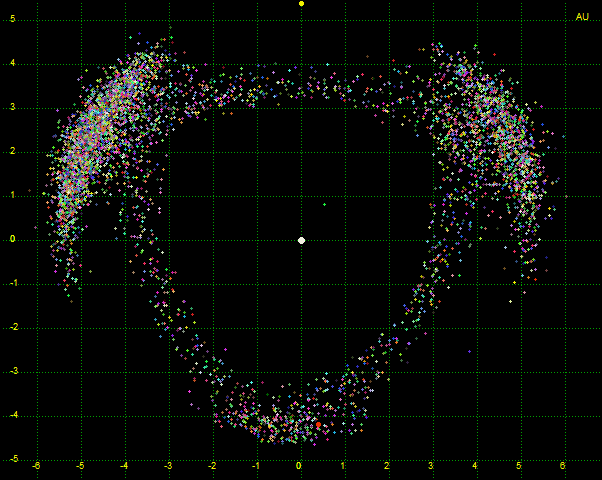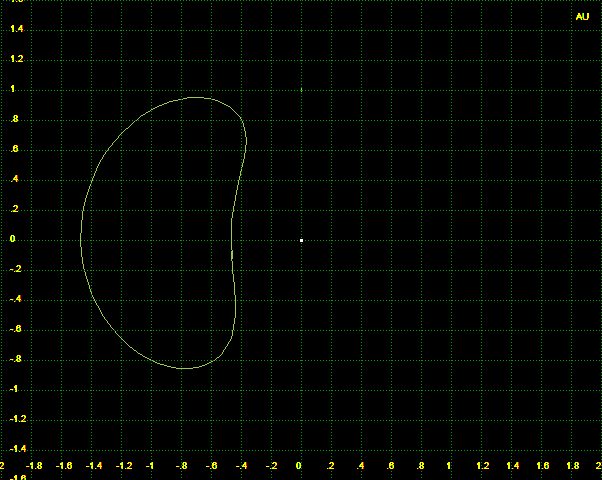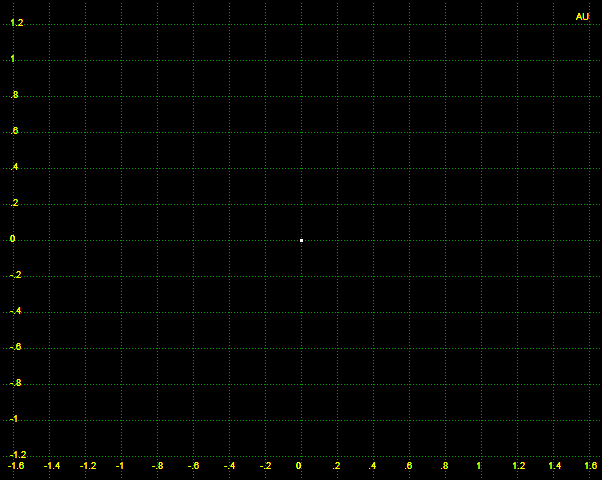
Dynamics of Hilda and Trojan asteroids in a rotating frame.
In this animated picture, resembling a sheep's head, the Trojan asteroids are the ears, and the Hildas are the contour of the head. The line of view (Z) is perpendicular to the mean plane of the solar system, and the frame (X,Y) is not fixed, but, being centered on the Sun, rotates synchronously with Jupiter, so that the Y axis is permanently oriented towards the planet (the yellow circle at the top). Therefore in this picture Jupiter slowly waves up and down, as it goes farther or closer to the Sun in its orbit.
The Trojan asteroids are locked in a 1:1 stabilizing resonance with Jupiter, and librate around the L4 and L5 Lagrangian points, situated 60° ahead and behind Jupiter along its orbit.
The Hilda asteroids are locked in a 3:2 stabilizing resonance with the planet, in such a way as to reach their conjunction with Jupiter (with respect to the Sun) near their respective perihelia, so that they never get too close to the planet.
In this rotating frame of reference, each side of the Hildas triangular path corresponds to one orbit around the Sun, with the rounded vertexes being the aphelia. While one body makes one full triangle, Jupiter goes up and down twice.
The green dot circling the Sun represents the Earth, while the other inner planets are hidden. In this picture one circle of the Earth around the Sun does not correspond to one year, but to the Jupiter's synodic period of about 399 days.
The animation is made up with 999 frames, representing true positions separated each other by 20 days, and spans a total of 55 years, from 2016 to 2070.
A total of 5674 known asteroids (3471 Trojans and 2203 Hildas) are included, represented as randomly colored dots. Among the Hilda asteroids one is particularly important, and deserves to be highlighted as a red disk: it is (5368) Vitagliano...

